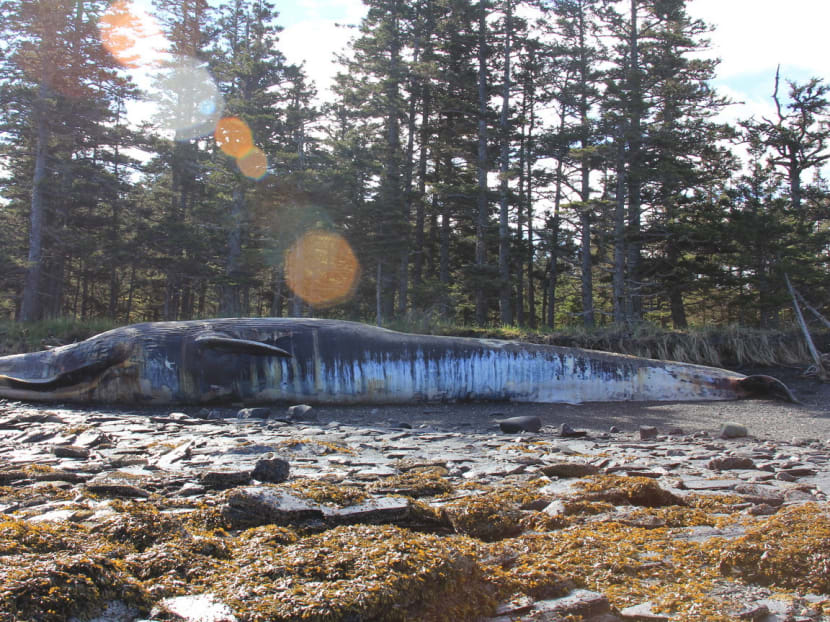Whale deaths off Alaska island remains mystery: Scientist
ANCHORAGE (Alaska) — Researchers may never solve the recent deaths of 18 endangered whales whose carcasses were found floating near Alaska's Kodiak Island, a scientist working on the case said yesterday (July 27).

In this photo provided by the University of Alaska Fairbanks Gulf Apex Predator Prey project, a fin whale lies dead on Kodiak Island, Alaska, on June 8, 2015. Photo: University of Alaska Fairbanks via AP
ANCHORAGE (Alaska) — Researchers may never solve the recent deaths of 18 endangered whales whose carcasses were found floating near Alaska's Kodiak Island, a scientist working on the case said yesterday (July 27).
Samples taken from one of the 10 fin whales were at least a week old, which could throw off test results, said Dr Kate Wynne, a marine mammal specialist for the University of Alaska Sea Grant Program. The carcasses of eight humpback whales also were found.
The carcasses of the marine mammals were discovered between Memorial Day weekend and early this month. Most of the animals were too decomposed for sampling.
Both species of whales feed close together, and scientists speculate the animals might have eaten something toxic in waters that were significantly warmer than average at the time. One test came back negative for one toxin that would be present in harmful algal blooms, and another test is still pending, Dr Wynne said.
"That's my leading hypothesis," Dr Wynne said of an environmental toxin as a cause. "The carcasses unfortunately are getting older and less sample-able. So we never will find out what killed those whales, in my mind."
Other test results also are pending, however. A muscle-tissue sample is being tested for the possibility of radionuclides from the 2011 Fukushima nuclear disaster. Scientists also have looked at other possibilities, including sonar and seismic exploration.
The deaths are an unusual occurrence, Dr Wynne said. She said she's never heard of anything similar occurring among large baleen whales in the US.
The National Oceanic and Atmospheric Administration (NOAA) is also looking into the deaths of a slightly larger number of whales over a larger area. NOAA is requesting the deaths to be designated nationally as an unusual mortality event, which would free of federal funding for further studying the deaths, NOAA spokeswoman Ms Julie Speegle said.
Along with the dead whales, dead birds including murres and shearwaters were reported earlier in the investigation. Tests showed the shearwaters had a high parasite count and were starving, Dr Wynne said. The murres were not sampled, but Dr Wynne said those deaths could be part of a die-off that occurs periodically. AP





